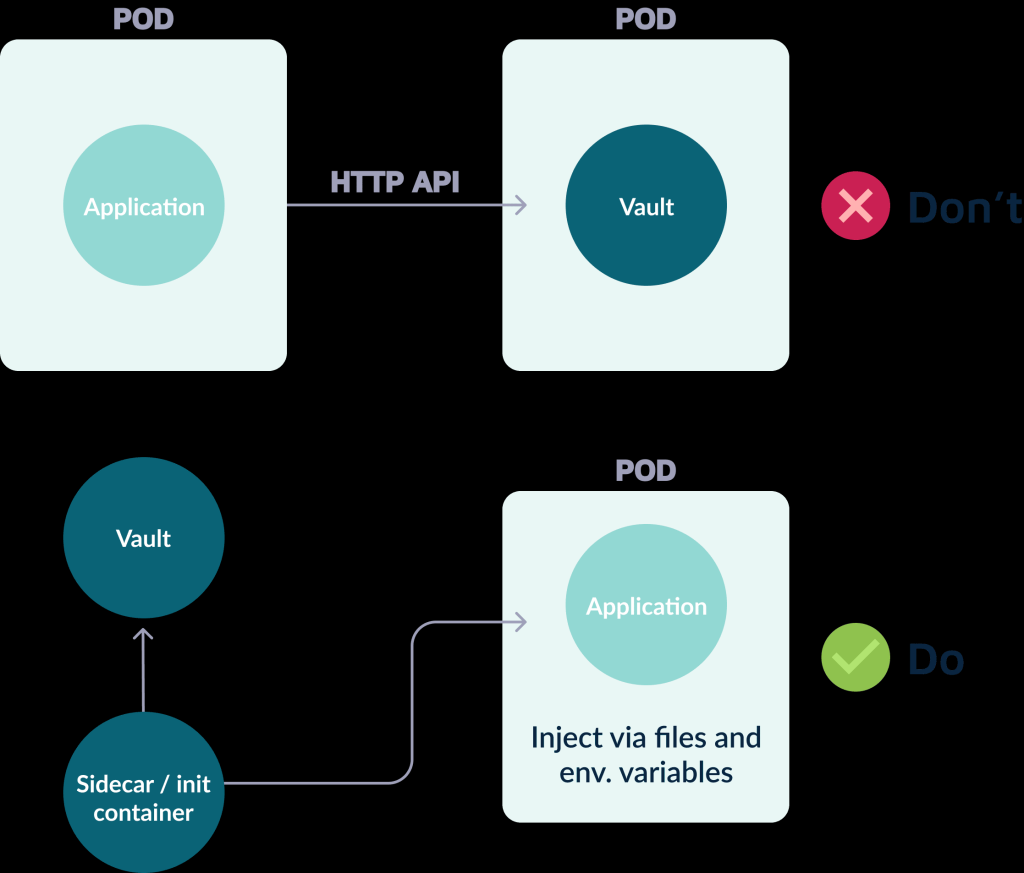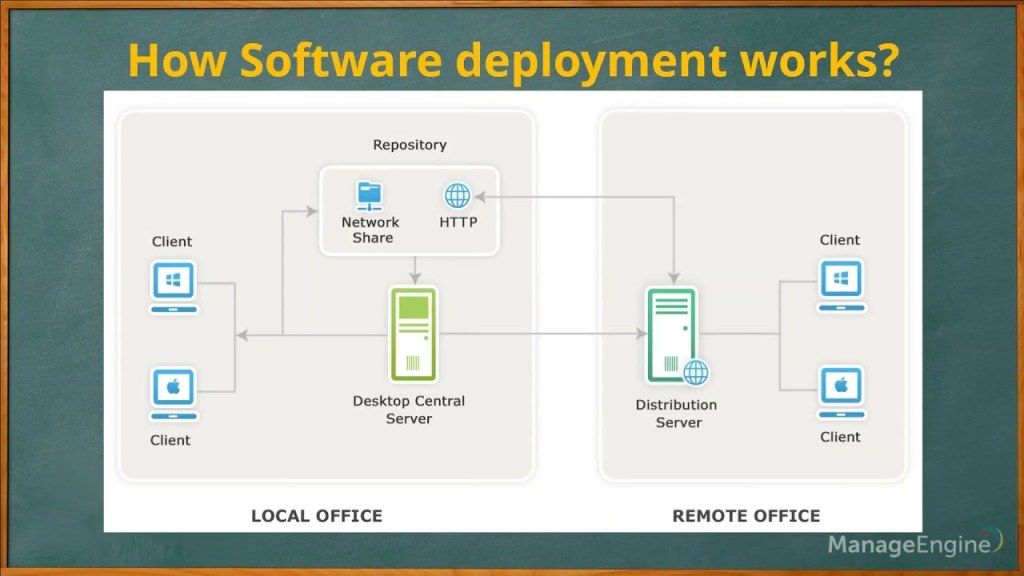Mastering Software Deployment: The Ultimate Tutorial For Seamless Implementation
Software Deployment Tutorial
Introduction
Welcome, Readers!
2 Picture Gallery: Mastering Software Deployment: The Ultimate Tutorial For Seamless Implementation


In today’s digital age, software deployment plays a vital role in the success of any organization. It refers to the process of making software available for use, ensuring its proper installation, configuration, and activation. In this tutorial, we will explore the ins and outs of software deployment, providing you with a comprehensive guide to effectively manage this crucial aspect of your business.

Image Source: codefresh.io
Before diving into the details, let’s start with a brief overview of software deployment. Understanding the fundamentals will help you grasp the importance of this tutorial and its relevance to your organization’s success.
In the world of software development, deploying a program involves much more than simply installing it on a user’s machine. It encompasses a series of steps, including planning, testing, packaging, and distribution, to ensure that the software is delivered and installed correctly. Efficient software deployment saves time, enhances productivity, and reduces errors, making it an essential skill for developers, IT administrators, and project managers alike.
Now that we have set the stage, let’s delve into the details of software deployment and equip you with the knowledge and tools necessary to effectively manage this process.
What is Software Deployment?

Image Source: ytimg.com
💡Software deployment is the process of making software available for use by installing, configuring, and activating it on targeted devices or systems. It involves planning, testing, packaging, and distributing software to ensure its successful installation and utilization.
Software deployment encompasses various activities, including selecting the appropriate deployment method, preparing the software for deployment, managing dependencies, and conducting thorough testing to ensure compatibility and functionality.
The main goal of software deployment is to streamline the installation process and minimize disruptions for end-users. By following best practices and utilizing effective deployment strategies, organizations can ensure that their software is seamlessly deployed and ready for use.
Now that you understand the concept of software deployment, let’s explore the key players involved in this process.
Who is Involved in Software Deployment?
💡Software deployment is a collaborative effort that involves various stakeholders with distinct roles and responsibilities. The key players in the software deployment process include:
1. Developers:
Developers are responsible for coding and creating the software. They play a crucial role in ensuring that the software is prepared for deployment by adhering to industry standards and best practices.
2. IT Administrators:
IT administrators are responsible for managing the infrastructure and systems necessary for software deployment. They oversee the installation, configuration, and maintenance of software on various devices and networks.
3. Project Managers:
Project managers coordinate the software deployment process, ensuring that all tasks are completed on time and within budget. They oversee the planning, testing, and distribution of software to ensure its successful deployment.
4. End-Users:
End-users are the individuals who will ultimately utilize the deployed software. Their feedback and satisfaction are crucial in determining the success of the deployment process.
Having a clear understanding of the roles and responsibilities of each stakeholder is essential for effective software deployment. Now, let’s move on to the next section and explore when software deployment takes place.
When Does Software Deployment Occur?
💡Software deployment occurs at various stages throughout the software development life cycle. The timing of deployment depends on the specific project and its requirements. Here are the key stages when software deployment takes place:
1. Initial Deployment:
Initial deployment happens when a new software application is introduced to end-users for the first time. This could include deploying a new version of an existing software or launching an entirely new product.
2. Updates and Patches:
Software updates and patches are deployed to address bugs, security vulnerabilities, and performance enhancements. These deployments ensure that end-users have the latest version of the software with all the necessary improvements.
3. Migrations:
Software migration involves transferring an application from one environment to another, such as moving from on-premises to the cloud. This type of deployment requires careful planning and execution to ensure a smooth transition.
4. Rollouts:
Rollouts involve deploying software to a specific group or department within an organization before gradually expanding it to a wider audience. This allows for testing and gathering feedback before full-scale deployment.
Understanding when software deployment occurs is crucial for effective planning and execution. In the next section, we will explore where software deployment takes place.
Where Does Software Deployment Take Place?
💡Software deployment can take place in various environments, depending on the specific requirements and infrastructure of an organization. Here are the key locations where software deployment occurs:
1. Local Machines:
Software can be deployed directly on individual devices, such as desktops, laptops, or mobile devices. This is common for personal productivity applications or software that doesn’t require network connectivity.
2. Servers:
Software can be deployed on servers within an organization’s infrastructure. This allows for centralized management, control, and access to the software by multiple users.
3. Cloud Platforms:
Cloud-based software deployment involves hosting the application on a cloud platform, such as Amazon Web Services (AWS) or Microsoft Azure. This enables easy scalability, accessibility, and reduced infrastructure costs.
4. Virtual Environments:
Software can be deployed in virtual environments, where multiple instances of an application run on a single physical server. This approach maximizes resource utilization and provides flexibility in managing software.
The choice of deployment location depends on factors such as scalability, security, accessibility, and the specific needs of an organization. Now, let’s explore the reasons why software deployment is crucial.
Why is Software Deployment Important?
💡Software deployment is of paramount importance for organizations due to the following reasons:
1. Efficiency and Productivity:
Efficient software deployment ensures that end-users have access to the necessary tools and applications, enabling them to perform their tasks effectively and efficiently.
2. Cost Savings:
Properly deployed software reduces costs by eliminating manual installation and configuration processes, minimizing downtime due to errors, and optimizing resource utilization.
3. Security:
Deploying software with the latest security patches and updates protects organizations from potential vulnerabilities and threats.
4. Scalability:
Efficient deployment allows organizations to scale their software infrastructure as their needs grow, ensuring that the software can handle increased demand and user volumes.
5. User Satisfaction:
Effective deployment ensures that software is readily available, functional, and user-friendly, leading to higher end-user satisfaction and productivity.
Understanding the importance of software deployment is crucial for organizations seeking to maximize their efficiency, productivity, and overall success. Now, let’s explore the advantages and disadvantages of software deployment.
Advantages and Disadvantages of Software Deployment
Advantages of Software Deployment:
💡1. Enhanced Accessibility: Software deployment allows users to access applications and tools from any location, provided they have an internet connection.
2. Streamlined Updates: Deploying software updates and patches becomes more manageable, ensuring that users have the latest features and security enhancements.
3. Centralized Management: Software deployment enables centralized management, making it easier to monitor and control software across multiple devices and locations.
4. Improved Security: Deploying software with the latest security updates helps protect against vulnerabilities and potential threats.
5. Scalability: Organizations can scale their software infrastructure smoothly to accommodate growing user demands and changing business needs.
Disadvantages of Software Deployment:
💡1. Initial Setup Complexity: Setting up the infrastructure and processes for software deployment can be complex and time-consuming.
2. Compatibility Challenges: Ensuring compatibility across different devices, operating systems, and network configurations can be challenging during the deployment process.
3. Potential Downtime: Poorly executed deployments can result in system disruptions and downtime, impacting user productivity and satisfaction.
4. Learning Curve: For organizations new to software deployment, there may be a learning curve involved in understanding and implementing best practices.
5. Cost: Deploying software may require additional investments in infrastructure, resources, and training.
Understanding the advantages and disadvantages of software deployment allows organizations to make informed decisions and mitigate potential challenges. Now, let’s address some frequently asked questions related to software deployment.
Frequently Asked Questions (FAQ)
Q1: Can software deployment be automated?
💡A1: Yes, software deployment can be automated using tools and technologies such as continuous integration and deployment (CI/CD) pipelines. Automation streamlines the deployment process, reducing manual errors and saving time.
Q2: What are the common deployment methods?
💡A2: Common deployment methods include manual deployment, scripted deployment using command-line tools, and automated deployment using specialized deployment tools or platforms.
Q3: How can I ensure a successful software deployment?
💡A3: To ensure a successful software deployment, it is essential to thoroughly test the software, have a well-defined deployment plan, communicate with stakeholders, and monitor the deployment process closely.
Q4: What is rollback in software deployment?
💡A4: Rollback refers to reverting to a previous version of software in case of deployment failures or issues. It allows organizations to minimize disruptions and quickly restore functionality.
Q5: How can I handle software dependencies during deployment?
💡A5: Managing software dependencies involves identifying and installing the required libraries, frameworks, or components to ensure that the software functions correctly. Tools such as package managers can simplify this process.
These frequently asked questions address common concerns and provide valuable insights into software deployment. Now, let’s wrap up this tutorial with a compelling conclusion.
Conclusion
In conclusion, software deployment is an integral aspect of software development that ensures applications are installed, configured, and activated correctly. By following best practices and utilizing effective deployment strategies, organizations can streamline the process, save costs, enhance security, and improve user satisfaction.
We explored the various stages, players, and locations involved in software deployment, highlighting its importance and benefits. Additionally, we discussed the advantages and disadvantages of software deployment, providing a balanced perspective.
Remember, successful software deployment requires careful planning, testing, and communication with stakeholders. By leveraging automation tools and staying abreast of industry best practices, you can ensure a seamless and efficient software deployment process.
Now that you have a solid understanding of software deployment, take the next step and apply these principles to your organization’s software projects. Embrace the power of effective software deployment and unlock new opportunities for success.
Final Remarks
💡As you embark on your software deployment journey, it is important to note that each organization’s needs and requirements may vary. The information provided in this tutorial serves as a general guide, and you should adapt it to suit your specific circumstances.
Always prioritize thorough testing, security, and user satisfaction throughout the deployment process. Regularly update your knowledge of industry trends and emerging technologies to stay ahead in the dynamic world of software deployment.
Good luck with your software deployment efforts, and may your applications reach new heights of success!
This post topic: Software Tutorials



